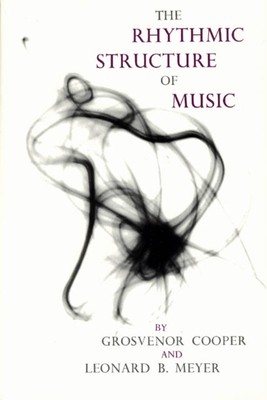
- We will send in 10–14 business days.
- Author: Grosvenor Cooper
- Publisher: University of Chicago Press
- ISBN-10: 0226115224
- ISBN-13: 9780226115221
- Format: 15.2 x 22.7 x 1.2 cm, softcover
- Language: English
- SAVE -10% with code: EXTRA
Reviews
Description
In this influential book on the subject of rhythm, the authors develop a theoretical framework based essentially on a Gestalt approach, viewing rhythmic experience in terms of pattern perception or groupings. Musical examples of increasing complexity are used to provide training in the analysis, performance, and writing of rhythm, with exercises for the student's own work.
This is a path-breaking work, important alike to music students and teachers, but it will make profitable reading for performers, too.--New York Times Book Review When at some future time theories of rhythm . . . are . . . as well understood, and as much discussed as theories of harmony and counterpoint . . . they will rest in no small measure on the foundations laid by Cooper and Meyer in this provocative dissertation on the rhythmic structure of music.--Notes . . . . a significant, courageous and, on the whole, successful attempt to deal with a very controversial and neglected subject. Certainly no one who takes the time to read it will emerge from the experience unchanged or unmoved.--Journal of Music Theory The late GROSVENOR W. COOPER, author of Learning to Listen, was professor of music at the University of California at Santa Cruz.EXTRA 10 % discount with code: EXTRA
The promotion ends in 12d.15:43:53
The discount code is valid when purchasing from 10 €. Discounts do not stack.
- Author: Grosvenor Cooper
- Publisher: University of Chicago Press
- ISBN-10: 0226115224
- ISBN-13: 9780226115221
- Format: 15.2 x 22.7 x 1.2 cm, softcover
- Language: English English
In this influential book on the subject of rhythm, the authors develop a theoretical framework based essentially on a Gestalt approach, viewing rhythmic experience in terms of pattern perception or groupings. Musical examples of increasing complexity are used to provide training in the analysis, performance, and writing of rhythm, with exercises for the student's own work.
This is a path-breaking work, important alike to music students and teachers, but it will make profitable reading for performers, too.--New York Times Book Review When at some future time theories of rhythm . . . are . . . as well understood, and as much discussed as theories of harmony and counterpoint . . . they will rest in no small measure on the foundations laid by Cooper and Meyer in this provocative dissertation on the rhythmic structure of music.--Notes . . . . a significant, courageous and, on the whole, successful attempt to deal with a very controversial and neglected subject. Certainly no one who takes the time to read it will emerge from the experience unchanged or unmoved.--Journal of Music Theory The late GROSVENOR W. COOPER, author of Learning to Listen, was professor of music at the University of California at Santa Cruz.

Reviews